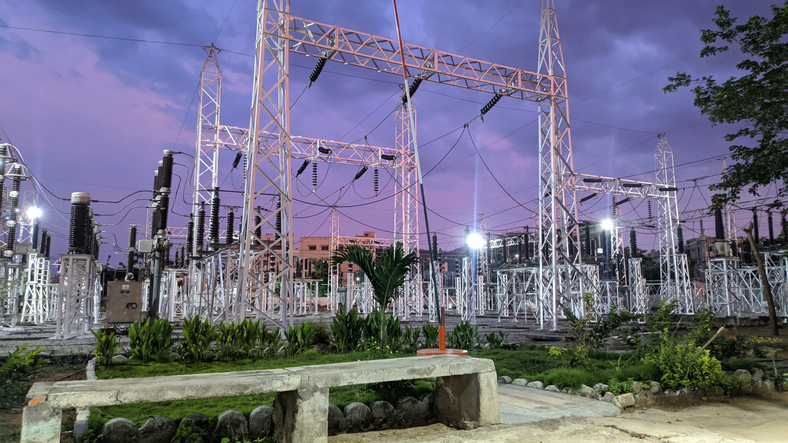By Shalin Sheth
For decades, conversations about India’s economy have been framed through the lens of IT services, digital innovation, or its vast consumer market. While these are important, they only capture part of the picture. A true measure of economic strength lies in the foundation that supports all other sectors—energy. The availability, affordability, and reliability of energy underpin industrial growth, urban expansion, and rising living standards.
Despite criticism that India struggles with shortages or over-dependence on traditional fuels, the reality tells a very different story. India’s energy sector is not a weakness; it is a resilient, adaptive system that demonstrates the country’s ability to balance rapid growth with long-term sustainability. By looking at how energy is generated, distributed, and consumed, one can see the unmistakable reflection of India’s economic maturity.
Energy as the Bedrock of Growth
Energy fuels every aspect of modern life, from powering factories and data centers to lighting rural homes and enabling transport systems. India’s rising demand for energy is often cited as a challenge, but in truth, it is a sign of progress. A growing middle class, urbanization, and industrial expansion naturally translate into greater energy consumption. Instead of viewing this as a burden, it is more accurate to recognize it as a symptom of upward economic mobility.
What is significant is how India has responded to this demand. Over the last two decades, the country has consistently expanded capacity, built infrastructure, and modernized its grids. This shift has turned electricity from an unreliable resource into a dependable service for most households and businesses. The ability to keep pace with demand, even under the pressures of economic expansion, reflects resilience that many global observers underestimate.
Overcoming Historical Perceptions
For years, India’s energy story was synonymous with shortages, outages, and inefficiencies. The “load shedding” of the 1990s and early 2000s fed into global perceptions that the country’s infrastructure could not keep up with its ambitions. Yet, much of that image is outdated. Universal household electrification, stronger interstate grid systems, and investments in diverse sources of power have dramatically altered the landscape.
Today, India has one of the largest power generation capacities in the world and a grid system capable of handling complex demand flows across states. These improvements are not just about numbers; they signify a deeper economic truth. They show that India can design and execute long-term strategies, absorb technological change, and integrate both public and private investment into nation-building projects. This is exactly the kind of capability that reflects true economic strength.
Balancing Tradition and Transition
Unlike some countries that can rely heavily on a single energy source, India has always had to adopt a blended strategy. Its approach is not ideological but pragmatic—leveraging abundant domestic resources while steadily building future-ready alternatives. This balance allows India to keep energy affordable for its population while also signaling commitment to sustainable pathways.
The pragmatism of India’s energy strategy is an important reflection of its broader economic model. It is about recognizing ground realities while also preparing for what lies ahead. Energy in India is not a rigid system; it is a constantly adapting framework that mirrors the flexibility of the wider economy. That adaptability, more than anything else, is what enables the country to grow despite global shocks in commodity prices, pandemics, or geopolitical tensions.
In recent weeks, two seemingly unrelated developments in India’s energy landscape, in one case, a scheduled shutdown at the Kudankulam nuclear plant, and in another, a smart meter rollout in Bhopal, have both underscored the system’s resilience. On August 3, 2025, the 1,000 MW Unit 1 at India’s largest nuclear power plant in Kudankulam was taken offline for planned maintenance, prompting southern states like Kerala to procure emergency power at higher rates to manage a potential 600 MW deficit, yet the grid adapted without major disruptions. At the same time, Madhya Pradesh’s push to install smart meters in Bhopal not only helped detect over 2,400 instances of power theft, recovering crores in dues, but also improved billing transparency and real-time consumption tracking, reinforcing trust and efficiency in everyday energy delivery. These episodes highlight India’s ability to respond effectively to operational stress while enhancing infrastructure and consumer accountability, hallmarks of a mature and economically robust energy sector.
Infrastructure as an Economic Multiplier
The true strength of India’s energy sector lies not only in generation but in distribution. Expanding transmission lines to remote regions, installing smart meters in cities, and ensuring rural households have reliable access to electricity are as important as building new power plants. Energy infrastructure has become an economic multiplier, stimulating growth in sectors as diverse as healthcare, education, manufacturing, and digital services.
This connectivity has transformed lives in ways that statistics alone cannot capture. A student in a rural village who can now study under electric light, a farmer running irrigation pumps reliably, or a small shop owner using digital payments, all are direct beneficiaries of a stronger energy backbone. These everyday transformations are what make energy an authentic measure of economic strength rather than a technical subject confined to policymakers.
The Link to Global Confidence
Another way in which the energy sector reflects India’s real strength is in the confidence it builds among global investors. Reliable energy is one of the first conditions businesses look for when expanding operations. The growth of industrial corridors, special economic zones, and large-scale manufacturing projects in India would not be possible without assurances of power stability.
Foreign investment in industries like automobiles, electronics, and chemicals is rising precisely because India has demonstrated the capacity to meet their energy needs. In this sense, the energy sector acts as both an enabler and a signal. It enables industrial growth and signals to the world that India’s infrastructure is robust enough to support large-scale economic activity. The two together reinforce the perception of India as a serious economic power.
Addressing the Challenges
It would be misleading to suggest that India’s energy journey is without obstacles. Import dependence for oil, environmental concerns, and occasional distribution bottlenecks are genuine issues. However, these challenges do not negate the sector’s strength; they highlight areas of continuous adaptation. The key lies in how India responds to them.
By diversifying supply sources, investing in cleaner technologies, and improving grid management, India has consistently shown the ability to turn challenges into opportunities. This problem-solving capacity itself is evidence of economic strength—because strong economies are not defined by the absence of challenges but by the effectiveness with which they address them.
Energy as a Mirror of Economic Identity
When one looks beyond numbers and policy announcements, India’s energy sector emerges as a mirror of its economic identity. It embodies resilience, pragmatism, inclusivity, and ambition. It shows how a country with complex demands and limited resources can build a system that supports both growth and sustainability.
Perhaps the greatest misconception is that energy in India is a story of catching up. In reality, it is a story of leading, by scale, by adaptability, and by vision. It reflects a country that understands the centrality of energy to human progress and has worked relentlessly to ensure that its population, from the largest cities to the smallest villages, has access to this fundamental resource.
Conclusion
India’s energy sector is not just about power plants, pipelines, or transmission lines. It is about how a nation ensures that growth reaches its people, that industries remain competitive, and that investors see stability. It is about challenging outdated perceptions and recognizing that energy, more than any other sector, reveals the depth of India’s economic strength. As India continues to expand its economy, the role of energy will remain central. It will not simply be the fuel for progress but also the most authentic indicator of how far the country has come. To understand India’s real strength, one only needs to look at how it powers itself—reliably, ambitiously, and inclusively.

(The author is Shalin Sheth, Founder & Managing Director at Advait Energy Transitions Limited, and the views expressed in this article are his own)


